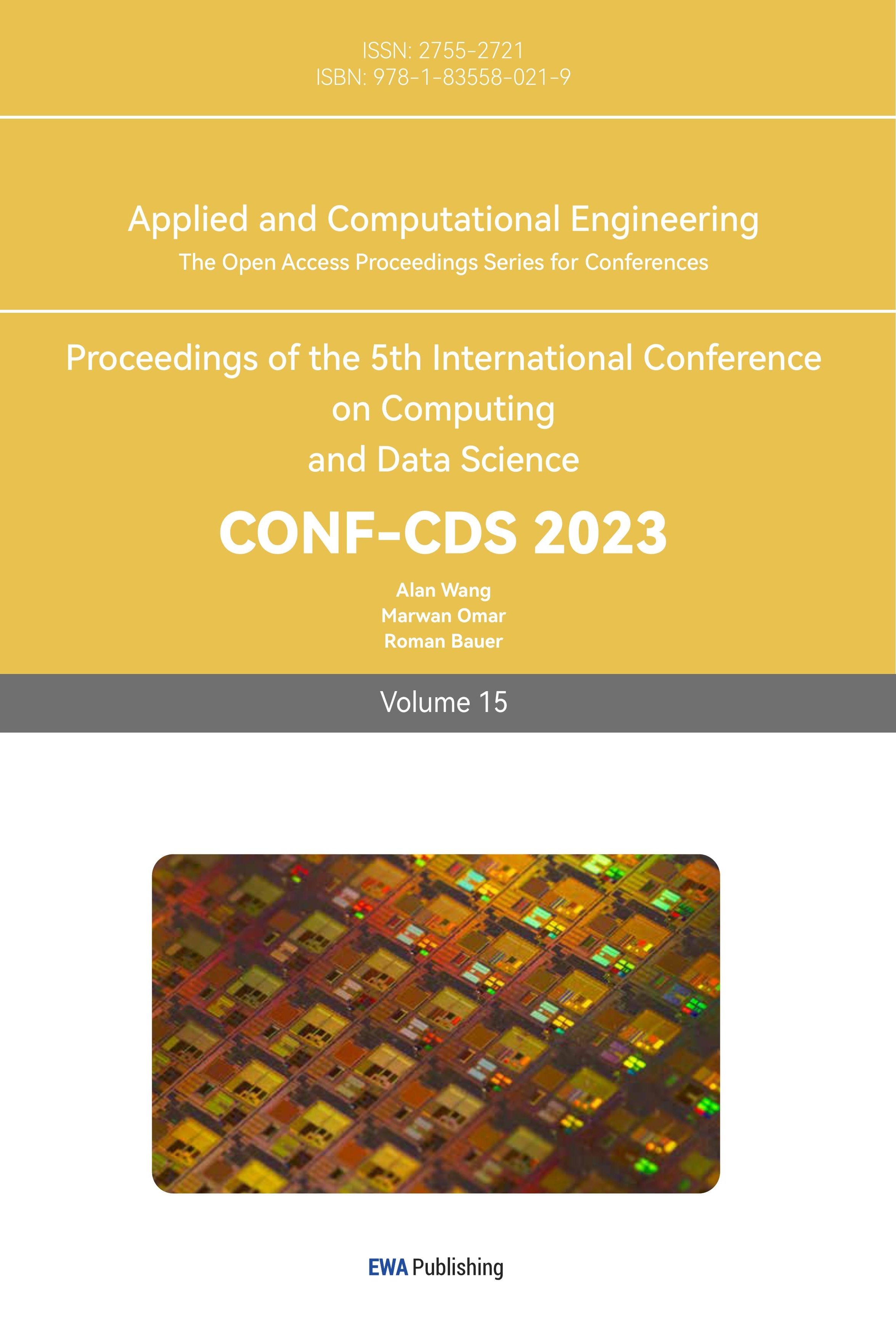References
[1]. Westera, W., Prada, R., Mascarenhas, S., Santos, P.A., Dias, J., Guimarães, M. and Georgiadis, K. 'Artificial intelligence moving serious gaming: Presenting reusable game AI components', 2020 Edu. Infor. Tech., 25(1), 351+.
[2]. Risi, S., & Preuss, M. From chess and atari to starcraft and beyond: How game ai is driving the world of ai. 2020 KI-Künst. Intell., 34, 7-17.
[3]. Silver, David, et al. Mastering the game of Go with deep neural networks and tree search. 2016 Nature 529.7587: 484-489.
[4]. Lu, Yunlong, and Wenxin Li. Techniques and Paradigms in Modern Game AI Systems. 2022 Algorithms 15.8: 282.
[5]. Tesauro, Gerald. Temporal difference learning and TD-Gammon. 1995 Commun. ACM 38.3: 58-68.
[6]. Campbell, Murray, A. Joseph Hoane Jr, and Feng-hsiung Hsu. Deep blue. 2002 Artif. Intell. 134.1-2: 57-83.
[7]. Mnih, Volodymyr, et al. Playing atari with deep reinforcement learning. 2013 arXiv preprint arXiv:1312.5602.
[8]. Berner, Christopher, et al. Dota 2 with large scale deep reinforcement learning. 2019 arXiv preprint arXiv:1912.06680.
[9]. Oh, Inseok, et al. Creating pro-level AI for a real-time fighting game using deep reinforcement learning. 2021 IEEE Trans. Games 14.2: 212-220.
[10]. Ye, Deheng, et al. Towards playing full moba games with deep reinforcement learning. 2020 Adv. Neur. Infor. Proce. Sys. 33: 621-632.
[11]. Gunawan, Leonardo Jose, et al. Analyzing AI and the Impact in Video Games. 2022 4th Inter.Conf. Cyber. Intell. Sys.,1-9.
[12]. Torrado, Ruben Rodriguez, et al. Deep reinforcement learning for general video game ai. 2018 IEEE Conf. Comput. Intell. Games, 1-11.
[13]. Barriga, Nicolas A. A short introduction to procedural content generation algorithms for videogames. 2019 Intern. J. Artif. Intell. Tools 28.02: 1930001.
[14]. Zhang, Yuzhong, Guixuan Zhang, and Xinyuan Huang. A Survey of Procedural Content Generation for Games. 2022 Inter. Conf. Cul.Orient. Sci. Tech., 1-10.
[15]. Liu, Jialin, et al. Deep learning for procedural content generation. 2021 Neu.l Comput. Appl. 33.1: 19-37.
Cite this article
Shen,B. (2023). How AI evolved with game and implementation of modern AI in game. Applied and Computational Engineering,15,167-173.
Data availability
The datasets used and/or analyzed during the current study will be available from the authors upon reasonable request.
Disclaimer/Publisher's Note
The statements, opinions and data contained in all publications are solely those of the individual author(s) and contributor(s) and not of EWA Publishing and/or the editor(s). EWA Publishing and/or the editor(s) disclaim responsibility for any injury to people or property resulting from any ideas, methods, instructions or products referred to in the content.
About volume
Volume title: Proceedings of the 5th International Conference on Computing and Data Science
© 2024 by the author(s). Licensee EWA Publishing, Oxford, UK. This article is an open access article distributed under the terms and
conditions of the Creative Commons Attribution (CC BY) license. Authors who
publish this series agree to the following terms:
1. Authors retain copyright and grant the series right of first publication with the work simultaneously licensed under a Creative Commons
Attribution License that allows others to share the work with an acknowledgment of the work's authorship and initial publication in this
series.
2. Authors are able to enter into separate, additional contractual arrangements for the non-exclusive distribution of the series's published
version of the work (e.g., post it to an institutional repository or publish it in a book), with an acknowledgment of its initial
publication in this series.
3. Authors are permitted and encouraged to post their work online (e.g., in institutional repositories or on their website) prior to and
during the submission process, as it can lead to productive exchanges, as well as earlier and greater citation of published work (See
Open access policy for details).
References
[1]. Westera, W., Prada, R., Mascarenhas, S., Santos, P.A., Dias, J., Guimarães, M. and Georgiadis, K. 'Artificial intelligence moving serious gaming: Presenting reusable game AI components', 2020 Edu. Infor. Tech., 25(1), 351+.
[2]. Risi, S., & Preuss, M. From chess and atari to starcraft and beyond: How game ai is driving the world of ai. 2020 KI-Künst. Intell., 34, 7-17.
[3]. Silver, David, et al. Mastering the game of Go with deep neural networks and tree search. 2016 Nature 529.7587: 484-489.
[4]. Lu, Yunlong, and Wenxin Li. Techniques and Paradigms in Modern Game AI Systems. 2022 Algorithms 15.8: 282.
[5]. Tesauro, Gerald. Temporal difference learning and TD-Gammon. 1995 Commun. ACM 38.3: 58-68.
[6]. Campbell, Murray, A. Joseph Hoane Jr, and Feng-hsiung Hsu. Deep blue. 2002 Artif. Intell. 134.1-2: 57-83.
[7]. Mnih, Volodymyr, et al. Playing atari with deep reinforcement learning. 2013 arXiv preprint arXiv:1312.5602.
[8]. Berner, Christopher, et al. Dota 2 with large scale deep reinforcement learning. 2019 arXiv preprint arXiv:1912.06680.
[9]. Oh, Inseok, et al. Creating pro-level AI for a real-time fighting game using deep reinforcement learning. 2021 IEEE Trans. Games 14.2: 212-220.
[10]. Ye, Deheng, et al. Towards playing full moba games with deep reinforcement learning. 2020 Adv. Neur. Infor. Proce. Sys. 33: 621-632.
[11]. Gunawan, Leonardo Jose, et al. Analyzing AI and the Impact in Video Games. 2022 4th Inter.Conf. Cyber. Intell. Sys.,1-9.
[12]. Torrado, Ruben Rodriguez, et al. Deep reinforcement learning for general video game ai. 2018 IEEE Conf. Comput. Intell. Games, 1-11.
[13]. Barriga, Nicolas A. A short introduction to procedural content generation algorithms for videogames. 2019 Intern. J. Artif. Intell. Tools 28.02: 1930001.
[14]. Zhang, Yuzhong, Guixuan Zhang, and Xinyuan Huang. A Survey of Procedural Content Generation for Games. 2022 Inter. Conf. Cul.Orient. Sci. Tech., 1-10.
[15]. Liu, Jialin, et al. Deep learning for procedural content generation. 2021 Neu.l Comput. Appl. 33.1: 19-37.









